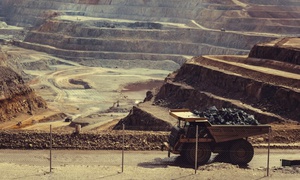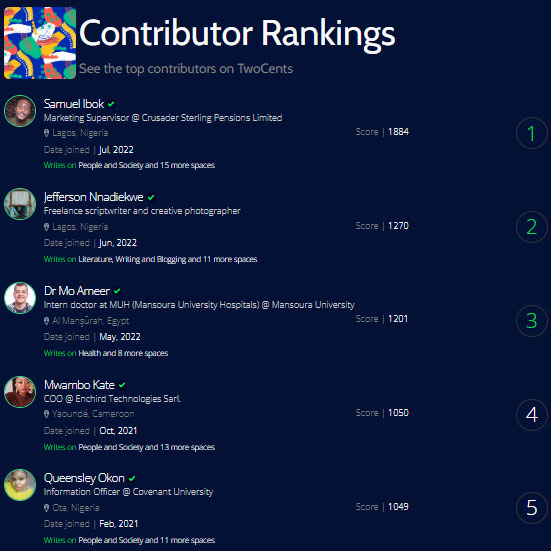Oluwatosin Leramo
Digital marketer @ Adekunle Ajasin
The Day the River Changed Course
<p style="text-align: center;"><sup><strong>The Day the River Changed Course</strong></sup></p><p><em><br/></em></p><p><em>The true story of the Kosi River in Bihar</em><em>, India</em></p><p><br/></p><p>For centuries, the Kosi River was both a lifeline and a looming threat in the Indian state of Bihar. Known locally as the "Sorrow of Bihar," this massive Himalayan river carried not just water but an unpredictable fury — shifting its course dramatically, often without warning.</p><p><br/></p><p>But in August 2008, something happened that shocked the world.</p><p><br/></p><p><br/></p><p>🌧️ <strong>The Collapse at Kusaha</strong></p><p><br/></p><p>Heavy monsoon rains in Nepal had pushed the Kosi River to the brink. The river, already swollen with glacial melt and runoff, pressed hard against its fragile embankments. On August 18, 2008, near a small village called Kusaha, a key embankment — maintained poorly for years — gave way.</p><p><br/></p><p>Within hours, the Kosi abandoned its existing course and surged through a channel it hadn’t followed since 1890 — over 100 years ago.</p><p><br/></p><p>It was as if the river had suddenly remembered an ancient path.</p><p><br/></p><p><br/></p><p>🌾 <strong>The Human Impact</strong></p><p><br/></p><p>Overnight, more than 3 million people were affected.</p><p><br/></p><p>Villages were submerged. Entire districts — like Supaul, Saharsa, and Madhepura — turned into islands. Farmlands were destroyed. People lost homes, livestock, and family members. Emergency shelters overflowed. Many were stranded for days before help arrived.</p><p><br/></p><p>The government declared it a national calamity. Relief efforts were massive, but slow. Locals recalled watching their homes float away while standing on raised roads, helpless.</p><p><br/></p><p><br/></p><p>🐘 <strong>The Environmental Shock</strong></p><p><br/></p><p>But it wasn’t just humans who suffered. The river’s sudden shift disrupted entire ecosystems:</p><p><br/></p><p>Gharials and river dolphins native to the Kosi were stranded or killed.</p><p><br/></p><p>Migratory bird nesting grounds vanished under mud and flood.</p><p><br/></p><p>Farmers reported seeing wild elephants displaced from forests, searching for food in villages.</p><p><br/></p><p>Fish populations collapsed in the new course due to sudden changes in salinity and oxygen levels.</p><p><br/></p><p><br/></p><p>The river had redrawn the map of life — for everything that depended on it.</p><p><br/></p><p><br/></p><p>🛠️ Why It Happened</p><p><br/></p><p>Geologists weren’t surprised. The Kosi is a braided river, born in the Himalayas and choked with silt. Every year, it carries millions of tons of sediment downhill, raising its bed. Over time, it naturally tries to change course to find a lower path.</p><p><br/></p><p>The 2008 breach was triggered by:</p><p><br/></p><p></p><ul><li>Silt buildup</li></ul><p></p><p><br/></p><p></p><ul><li>Inadequate embankment maintenance</li></ul><p></p><p><br/></p><p></p><ul><li>Excessive rainfall from climate shifts</li></ul><p></p><p><em><br/></em></p><p><em><br/></em></p><p><em>In short, nature + neglect = disaster</em>.</p><p><br/></p><p><strong><br/></strong></p><p><strong>🧭 Aftermath and Lessons</strong></p><p><br/></p><p>Years later, many villages were rebuilt, but some areas were never resettled. The government reinforced embankments, but experts warned: unless sediment is managed and floodplains are respected, it will happen again.</p><p><br/></p><p>Today, satellite images show the ghost path of the old Kosi. In some places, two rivers now exist — the new one, and the memory of the old.</p><p><br/></p><p><br/></p><p>🧠 <strong>Final Thought</strong></p><p><br/></p><p>The Kosi’s shift wasn’t just a flood — it was a message.</p><p><br/></p><p>Nature is not a machine to be controlled forever. Rivers are living systems. They remember. A<span style='background-color: transparent; font-family: "Helvetica Neue", Helvetica, Arial, sans-serif;'>nd when they move, the world around them must either adapt or drown.</span></p><p><br/></p><p><br/></p>


The Day the River Changed Course
By
Oluwatosin Leramo
•
6 plays
0:00 /
0:00
Other insights from Oluwatosin Leramo
Referral Earning
Points-to-Coupons
Insights for you.







 169
169

























































Comments